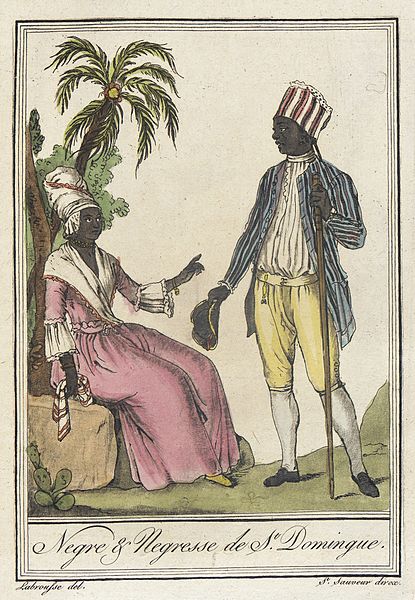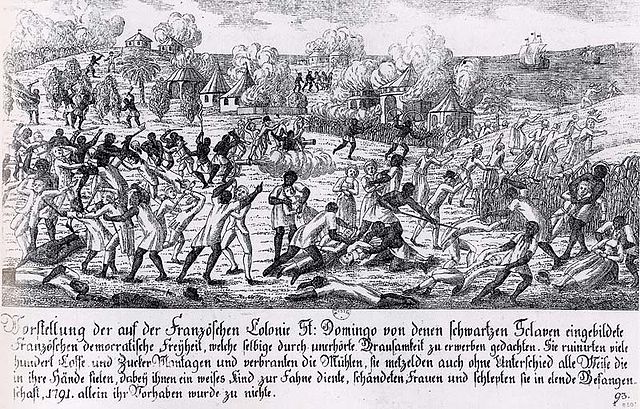Saint-Domingue was a French colony in the western portion of the Caribbean island of Hispaniola, in the area of modern-day Haiti, from 1697 to 1804. The name derives from the Spanish main city on the island, Santo Domingo, which came to refer specifically to the Spanish-held Captaincy General of Santo Domingo, now the Dominican Republic. The borders between the two were fluid and changed over time until they were finally solidified in the Dominican War of Independence in 1844.
A Creole servant boy and his mother
Drawing of a slave sale aboard the Marie Séraphique in the waters off Cap‑Français, 1773
Jean-Baptiste Belley, an affranchi who became a rich planter, elected member of the Estates General for Saint-Domingue, and later Deputy of the French National Convention
A rich Creole planter and his wife
French colonization of the Americas
France began colonizing the Americas in the 16th century and continued into the following centuries as it established a colonial empire in the Western Hemisphere. France established colonies in much of eastern North America, on several Caribbean islands, and in South America. Most colonies were developed to export products such as fish, rice, sugar, and furs.
Portrait of Jacques Cartier by Théophile Hamel, arr. 1844
Governor Frontenac performing a tribal dance with Indian allies
Saint-Domingue slave revolt in 1791







